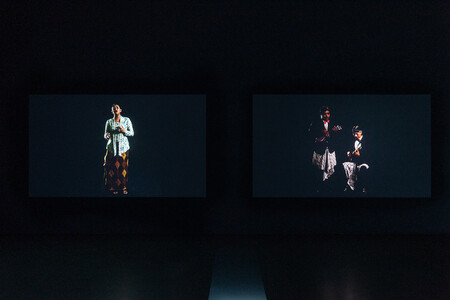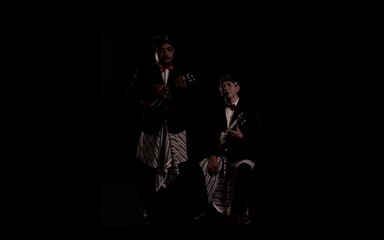Solo Exhibition Portikus, Frankfurt, Germany
Portikus is pleased to present Bengawan Solo, artist’s Arin Rungjang’s first institutional solo-exhibition in Germany.
At Portikus Arin Rungjang will show Bengawan Solo, a 7-channel video-installation which he produced for the 2017 Jakarta Biennale. The song is one of most popular Indonesian folk songs and its title refers to the island of Java’s longest river. Rungjang’s work juxtaposes the personal narratives of artist, the singers’ stories and the complex history of Bengawan Solo. It contrasts the romantic idea that can be found in the song’s lyrics with the dark history of the river during the Indonesian massacre of 1965-1967.
Rungjang’s first encounter with Bengawan Solo was when he saw Wong Kar Wai’s film In the Mood for Love (2000), in which the song was performed by Shanghainese singer Rebecca Pan. It was originally written in 1940 by the 23-year-old Gesang Martohartono. Rungjang identifies Bengawan Solo with romance and melancholia as it accompanied his tormented sensual feelings he had harbored for one of his classmates—despite his adoration for his then lover —ever since he was a little boy. According to the artist, it was so powerful, that it destroyed both his body and soul.
Later Rungjang traced the genesis of Bengawan Solo and found out that the song was about a river called Bengawan that passes through the city of Solo. Composed in a “keroncong” style, a genre influenced by Portuguese culture from the 15th century, the song depicts the beauty of Bengawan Solo. From that moment, the meaning of Bengawan Solo started to change for the artist.
Subsequently, he found the story of Anneke Grönloh, a singer with Tondano and Dutch blood whose childhood was spent in a Japanese concentration camp in the Dutch East Indies. Anneke moved to the Netherlands and in 1967 referred to her childhood memories by releasing a rendition of Bengawan Solo. In her childhood, Bengawan Solo happened to be a very popular song among Japanese soldiers. Anneke’s story reminds Rungjang of Koo Bun Koo Gum, a popular love story in Thailand involving a Thai girl and a Japanese soldier. This story is representative of a style of Thai love stories that end without clear resolution. It is only implied that Koo Bun Koo Gum ends with the soldier lying on the girl’s lap with his life fading after an American bomb attack during the Second World War.
During the purge of communists and people of Chinese-descent in Indonesia from 1965 to 1966, the river Bengawan Solo was used to throw in many dead bodies. In preparation for the Jakarta Biennale Arin Rungjang visited the river and the true story of the massacre upset the romantic overtones in his appreciation of the song.
In the seven-channel video work Rungjang invites Rachel Saraswati to sing “Bengawan Solo” with her keroncong group. The display of the individual singer and musicians on every screen is synchronized with texts recounting his personal experience.
Rungjang’s work suggests that the meaning of things can change drastically following the tides and turns of our lives and the stories revealed in unexpected situations.
More Pictures:



